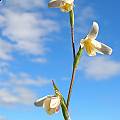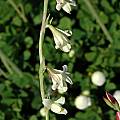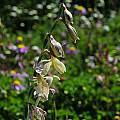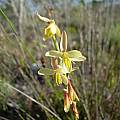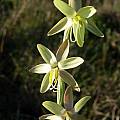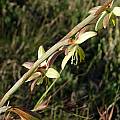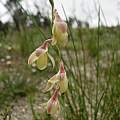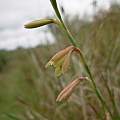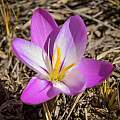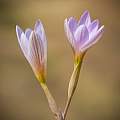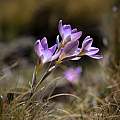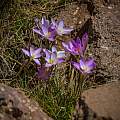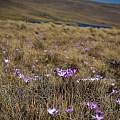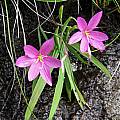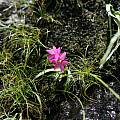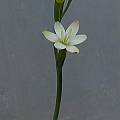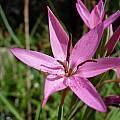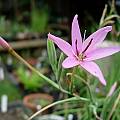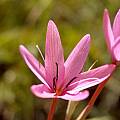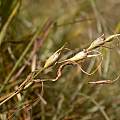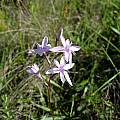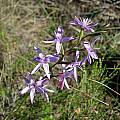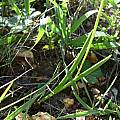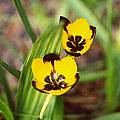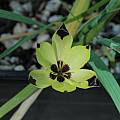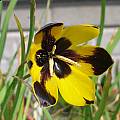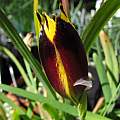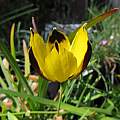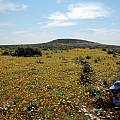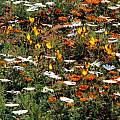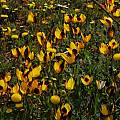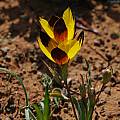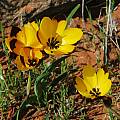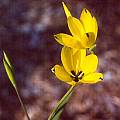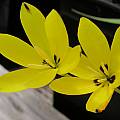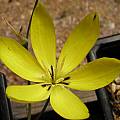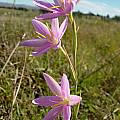Hesperantha is a cormous genus in the Iridaceae family from southern and tropical Africa. Species q-z are found on this wiki page. See the links below for information about this genus and other species.
Hesperantha species a-c – Hesperantha species d-j – Hesperantha species l-p – Hesperantha index
Hesperantha radiata (Jacq.) Ker Gawl. is widespread from Namaqualand to Swaziland, therefore growing both in winter and summer rainfall areas. This species grows on grassy heath and damp grassland, in sandstone, granite and clay soils, in fynbos and renosterveld. Plants grow to 40 cm tall and flower in spring. The white to cream flowers, often red to brown on the outside, are nodding on a recurved tube with reflexed tepals. Although the flowers last for a number of days, they open only late in the day and stay open throughout the night, closing in the morning. Flowers are fragrant (sweet with a clove component), produce a lot of nectar and are pollinated by moths. Photos were taken by Alan Horstmann, Bob Rutemoeller and Mary Sue Ittner in the Roggeveld.
Photos were taken by Cameron McMaster in the Overberg and the Eastern Cape.
Hesperantha schelpeana Hilliard & B.L.Burtt is endemic to the Drakensberg Alpine Area (Lesotho to KwaZulu-Natal) where it grows on seasonally waterlogged stony ground on the summit. It has solitary pink with a white center crocus-like fragrant flowers that are feathered red-purple on the outside. Leaves are produced after the flowers on a separate shoot. Height range: 15-20 cm. Photos from iNaturalist were taken by Brendan Cole in the Drakensberg in September and shared under a CC BY-NC-ND license
Hesperantha scopulosa Hilliard & B.L.Burtt is a long-tubed pink species that dwells on cliffs, and is found in the high Drakensberg in KwaZulu-Natal and is pollinated by the long proboscid fly. Height is about 15-20 cm. The flowers are open during the day. Photos from Cameron McMaster taken on Sentinel Peak in the Drakensberg.
Hesperantha sp. Photo from Mary Sue Ittner who grew this from seed a couple of times that came under a couple of different Geissorhiza names. It appears to be a Hesperantha instead. It increases rapidly and sets seed easily, but isn't a very exciting plant as it only blooms on warm days and then does not open until late in the day and the flower is very small, white, with red-brown on the back.
Hesperantha stenosiphon Goldblatt is a long-tubed, slightly cupped pink-flowered species with blackish anthers from Eastern Cape, South Africa. Discovered by Cameron McMaster growing on a hot, dry rocky dolerite ridge in the Eastern Cape, it was named in 2003. It has also been found in the high ridges above the Kei River in the Eastern part of the Stutterheim district. It flowers in late January with odorless flowers that are open during the day, and are pollinated by long proboscid flies. Height: 8-12 cm. Photos by Cameron McMaster.
Hesperantha truncatula Goldblatt grows on dry north-facing shale slopes in renosterveld in the Karoo foothills. Plants grow from 8 to 12 cm high. The pale blue-mauve flowers occur late winter to early spring, are unscented and open during the day. Photos by Cameron McMaster taken near Napier in the Overberg.
Hesperantha vaginata (Sweet) Goldblatt grows in heavy clay soil on the Bokkeveld Plateau and in the western Karoo. It has sword-shaped leaves and large cup-shaped odorless and nectarless short tubed yellow flowers often marked with dark brown in the center and the tips of the outer tepals. Flowers open mid to late afternoon on days that are warm enough. Height: 12-18 cm. This species is pollinated exclusively by the hopliine scarab beetle, Clania glenlyonensis, in its native habitat. Photos 1-3 by Mary Sue Ittner and photo 4 from Alan Horstmann were taken of plants in cultivation grown from seed. Photos 5-6 from Nhu Nguyen who grew his plants from seeds that flowered in 3 years.
Photographs taken September 2006 by Bob Rutemoeller and Mary Sue Ittner on a farm you could pay to drive through east of Nieuwoudtville. It was growing and blooming in several areas including spots where it was a mass of yellow.
This yellow form of Hesperantha vaginata used to be thought of as var. stanfordiae, but is now considered a form of the species. Photographs were taken by Mary Sue Ittner and Bob Rutemoeller.
Hesperantha woodii Baker is distributed from Lesotho to the southern Cape province. The long-tubed pink flowers are odorless and open in the morning, closing late afternoon. They are pollinated by long proboscid flies. Height: 15-20 cm. The photo was taken by Cameron McMaster in the Eastern Cape.
Hesperantha species a-c – Hesperantha species d-j – Hesperantha species l-p – Hesperantha index
